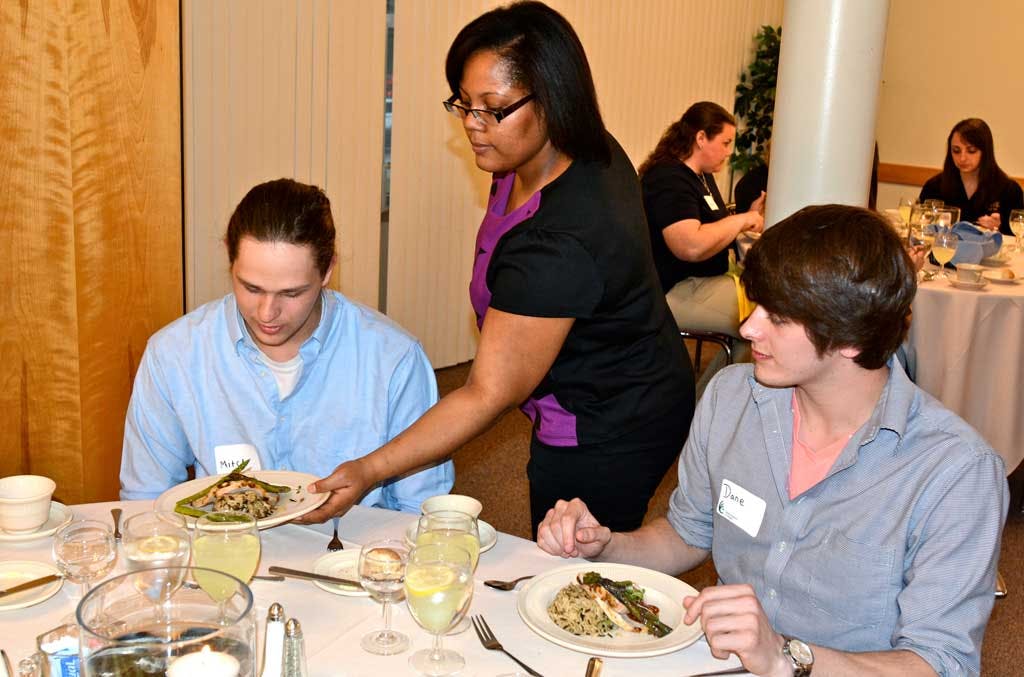'Knowing good etiquette is a ticket to acceptance and respect in the social world'
Wilmington College students learned that, in spite of living in an increasingly casual and often coarse society, there is still a place for good manners and traditionally accepted protocol for interacting in a business or formal setting.
(PICTURED) Julia Henderson, Sodexo's food service manager at WC, serves the main course to sophomores Mitchell Pfaltzgraf (LEFT) and Dane Blumenstock.
Some 60 students, faculty and staff participated in the annual Etiquette Dinner Thursday (April 6) sponsored by the Student Alumni Association, Student Government Association and Sodexo, the College’s dining services provider.
Renee Howard, Sodexo’s district support manager, presented a program that included table manners and step-by-step instruction in formal dining, which can be a bit intimidating when just viewing an array of forks in a formal place setting.
Consider the three-tine salad fork, which is located to the left of the four-tine dinner fork (maybe there is a fish fork on the far left) in a formal place setting, while the dessert fork is positioned with the dessertspoon above the serving plate.
Indeed, if one finds a fork on the right side of the place setting, that could only be a seafood or oyster fork.
Complicated? Somewhat. However, Howard explained everything — from the silverware, plates and glasses in the place setting to RSVPs, proper introductions and thank you notes — so it all made sense.
She said possession and display of that knowledge could impress a potential employer, client, dignitary or future in-law.
“It is all about projecting a professional image,” Howard said, “but it’s important to know the first rule of etiquette is to never use your knowledge of good manners to put someone else down.”
Some of the tips she shared were: never ignore an RSVP request when invited to an event, give a firm — but not crushing — handshake, always start a meal using utensils placed from the outside in, place your napkin on your lap and leave it on the back of your chair if you need to leave the table during the meal.
When the meal has concluded, your folded napkin should be placed to the left of your plate.
Also, break off and butter individual, bite-size pieces of your dinner roll rather than taking bites from the roll, and always pass items from left to right. And remember, salt and pepper travel as a team.
A modern adaptation of etiquette must address the presence — or omnipresence — of cell phones, which, Howard said, adding that, unless one is an on-call physician or an expectant father, they should be silenced and stowed in a pocket or purse — or better yet, left in the car.
“Your cell phone should never be your number one priority,” Howard said. “The ringer should be off and the phone should be out of sight.
“Knowing good etiquette is a ticket to acceptance and respect in the social world,” she added. “It’s about how you’re going to carry yourself in your adult life.”
